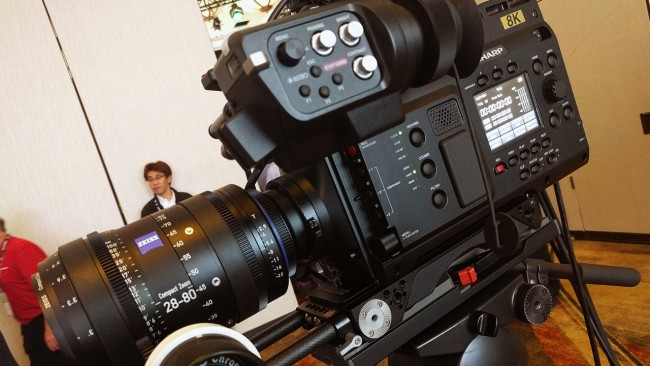
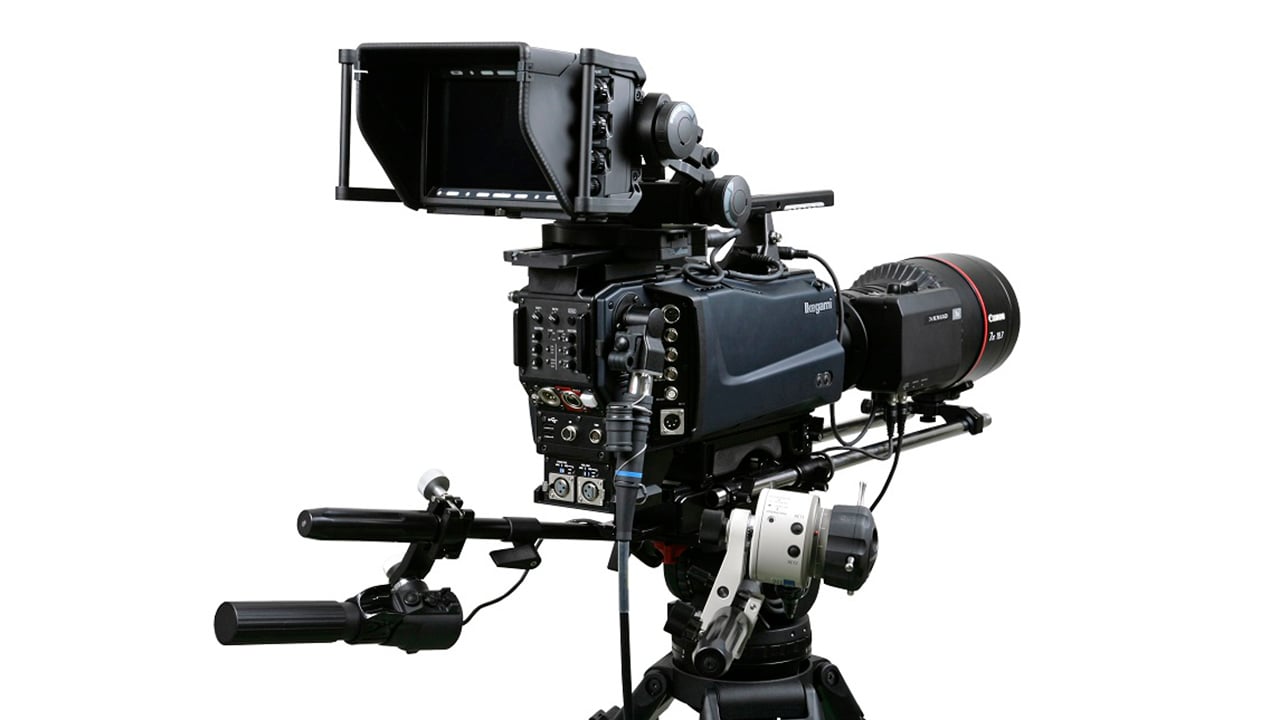 The Ikegami 8K SHK-810
The Ikegami 8K SHK-810
With around one and a half years to go until the Tokyo Olympics, Japanese broadcaster NHK is readying for what will inevitably be a watershed point for 8K. But the cameras that will be used, internally at least, be unlike any outside broadcast camera ever used for such an event before. Phil Rhodes looks at current sensor technology and asks what this means for such broadcasts.
Between now and the Tokyo Olympics in 2020, NHK should have put the finishing touches on its plans to broadcast the games in 8K. Going by their regular exhibitions of “super hi-vision” at various trade shows, they’re already well on the way, with cameras, displays, and even ways to send the pictures over radio links to and from remote areas. Sports broadcasting is one of those few places in which delivering 8K pictures to the home might actually make sense: keen sports viewers report that a sufficiently high-res picture on a sufficiently large screen replicates being in the stadium quite well and without the inconvenience and indignity of a VR headset.
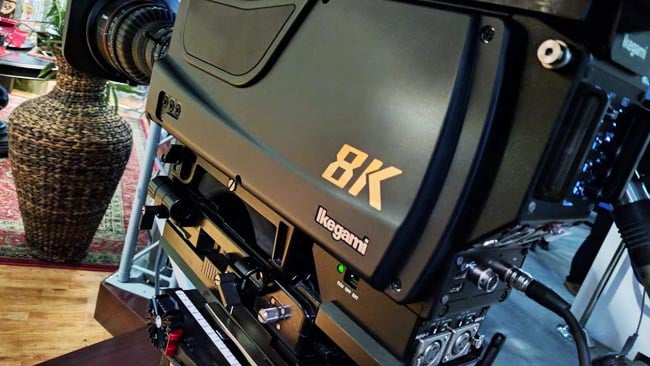
Ikegami has also built an 8K broadcast camera - though again, it uses a sensor similar in size to the super-35mm film frame. Notice the Canon CN7x17 zoom
At the same time, it’s become ever easier to shoot resolutions well beyond 4K for the big screen, and by that, we mean theatrical release, given that 8K home TVs had better be pretty big screens as well. In the world of feature film and high-end drama production, though, there’s often less intention to send all eight of those Ks from the camera to distribution. Usually, people shoot high-res for drama because it’s useful in modern post-intensive approaches to production. Even straightforward scenes, without visual effects, can be subject to cropping, stabilisation and replacements of inconvenient corporate insignia or anachronistic details in a period piece, and that can be done better – if not more easily – with more pixels to play with.
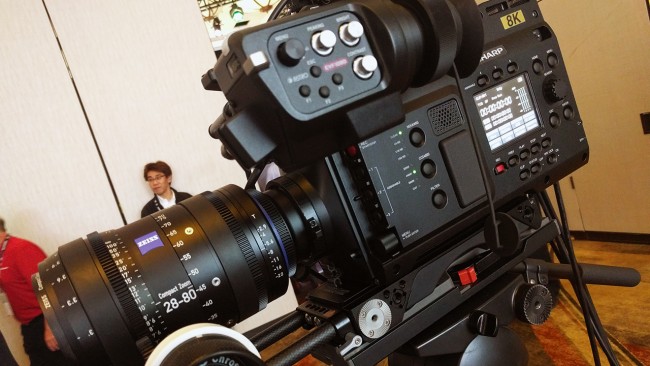
Sharp's 8C-B60A is built roughly in the form factor of a conventional video camcorder, though it's shown here with a Zeiss compact zoom that's required to cover its super-35mm sensor
The problem is that the increasing ease and convenience of extra-high resolution in drama production is not really reflected in broadcast production. The same could, at one time, be said for 4K: early 4K broadcasts were sometimes done with cameras such as the F65, outfitted - perhaps slightly awkwardly - for live-to-air production work. Sensor technology has improved since and both Sony and other manufacturers have produced 4K broadcast cameras which behave in much the same way that studio cameras always have. It keeps the crew happy - but to date, it’s been difficult to do that for 8K.
Putting large numbers of pixels on a sensor means the pixels have to be small, which in turn means less light will hit them. That means turning up the sensitivity, risking noise and potentially compromising the clarity and sharpness that we’re aiming for in the first place. It is, frankly, beyond 2018 technology to make an 8K sensor the size of those in most broadcast cameras - which are well under half the dimensions of a 35mm film frame - with acceptable performance.
Yes, cell phone cameras are tiny and have almost supernaturally good apparent performance, but that can be very heavily reliant on mathematical post-processing that isn’t reliable enough for broadcast work. Given improvements in computing, particularly artificial intelligence, that might change. For now, though, a truly professional camera needs a sensor that can do good work without massaging the pictures into shape after the fact.
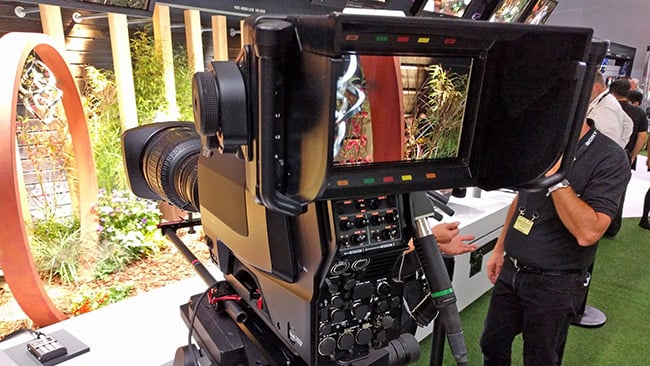
Viewfinding is another matter - 4K monitors are huge, 4K viewfinders barely exist, and 8K viewfinders simply don't exist
Because of this, 8K broadcast cameras generally have much bigger sensors than traditional types. Often, they’re the size of an APS stills frame, as with Sharp’s 8C-B60A camcorder. It’s a powerful camera, with an 8K sensor and high-quality onboard recording. Even so, its sensor is roughly the same size as a 35mm movie frame. That’s potentially fine, but it does mean that traditional broadcast lenses from the likes of Fujinon and Canon don’t usually cast a large enough image to cover the whole sensor. Lenses that do cover larger sensors get us back to a way of working that’s much more like drama or feature film and not ideal for the fast-paced pressure of a live sports broadcast. It works, but to experienced live production crews, it’s far from ideal.
Sony’s solution is the UHC-8300, which spreads the load across three monochrome imaging sensors. Each of them is intended to see the red, green or blue channel, just like a conventional broadcast camera. That means a colour splitter block, of course, with a prism and filters, which is complex and expensive, and means that lens design is also complex and more expensive. The UHC-8300 does work with conventional broadcast lenses which are designed with all this in mind, but it still uses larger-than-usual imaging sensors to keep performance high. As a result, the image needs to be optically enlarged, which makes it dimmer, so the camera is effectively less sensitive than its small-chip cousins.
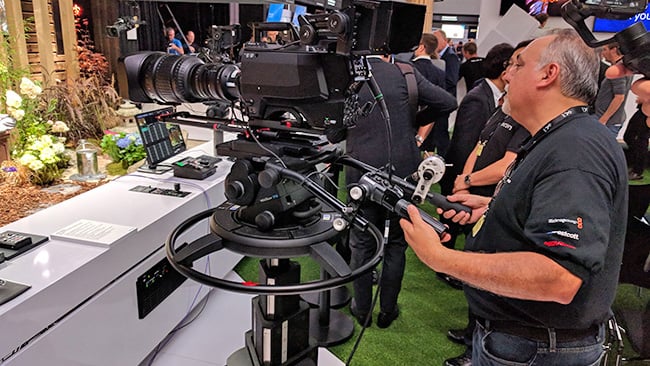
The Sony UHC-8300 was first shown at IBC last year and is possibly the best attempt at creating an 8K broadcast camera that crews will find familiar
The Sony camera has lower noise than the Sharp, but it’s big and bulky and neither device is an ideal solution. The ideal solution for 8K broadcast would be a two-thirds-inch, 8K chip. Could such a thing be made? Probably. Would it produce images of a quality that would satisfy the average flinty-eyed broadcast engineer, even in a three-chip splitter configuration? Signs point to “no.” 8K broadcast cameras are a goal being sought by many companies and if a truly effective 2/3” 8K sensor could be made, it would probably have been made by now.
As we've said, similar problems attended 4K cameras, though both Sony and Grass Valley have now built very effective options by taking advantage of advances in sensor design. It’s hard to predict whether or not those sorts of advances will come to the rescue of 8K broadcast cameras, but there’s no immediate prospect of it. It’s worth remembering that increasing the size of a rectangle from, say, 4K to 8K doubles the width, but requires four times the pixels. A 4K sensor might have 12 megapixels. An 8K sensor might have 48 megapixels. That's bigger than the biggest full-frame DSLRs, and people will still want their slow-motion replays, so we'll need to be shifting an awful lot of pixels per second to make it practical.
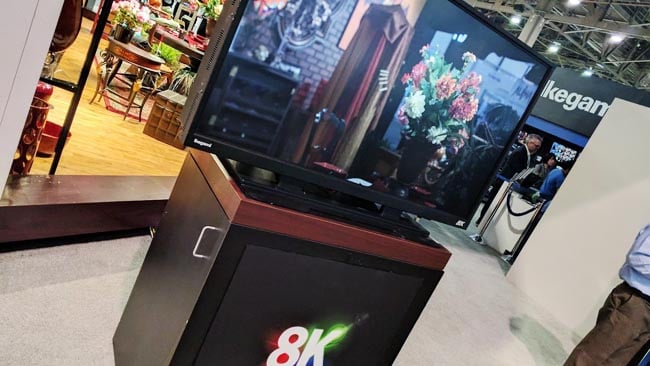
Ikegami also has 8K displays, but hardly suitable for use as an on-camera monitor. Perhaps we need to redefine what in-focus really means
It’s a big leap, and no correspondingly big leap in sensor technology is currently on the horizon. It seems likely that camera operators on the Tokyo Olympics might have to deal with equipment that, despite the sterling efforts of manufacturers, doesn’t quite behave the same way as it has in the past.
Tags: Production


Comments